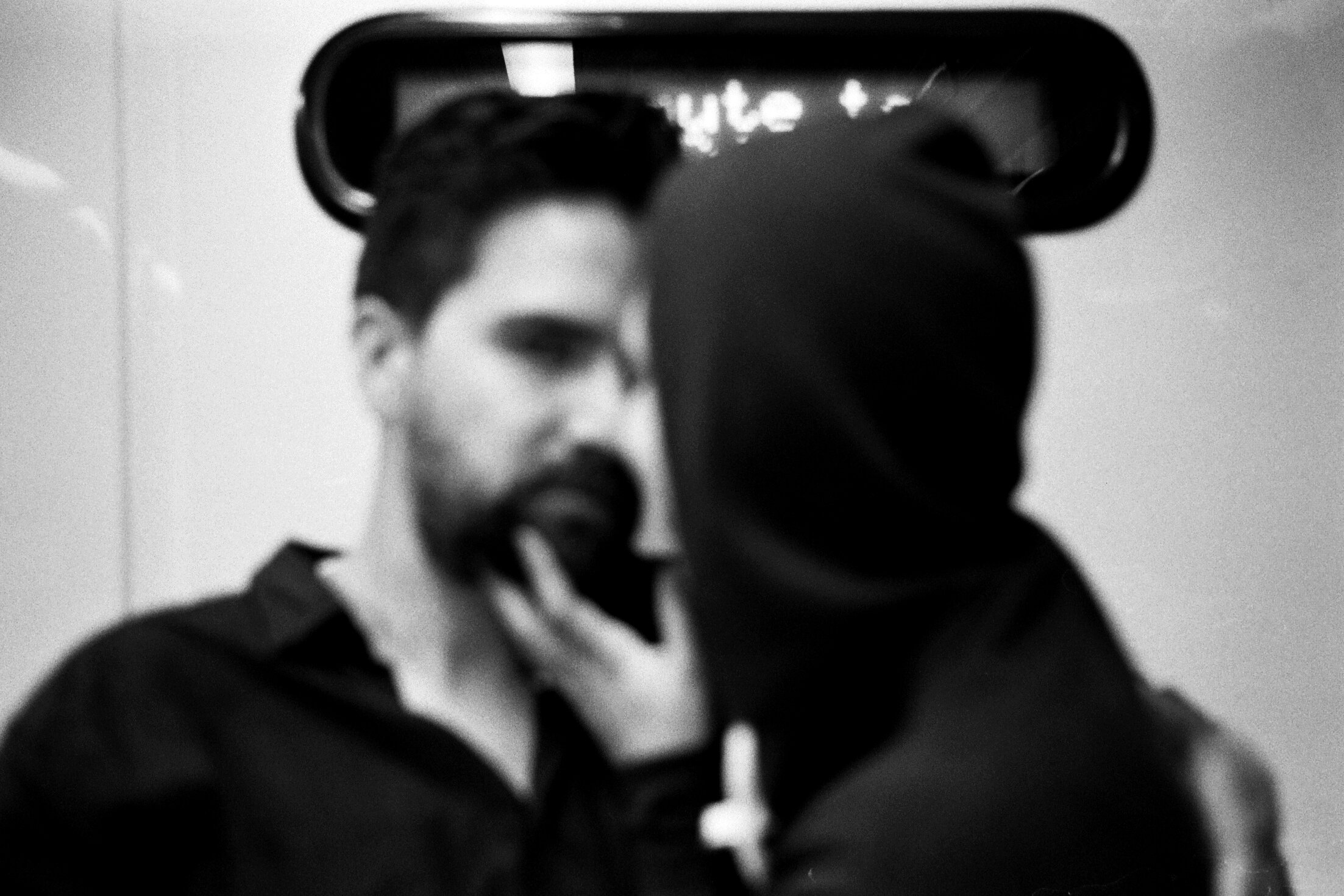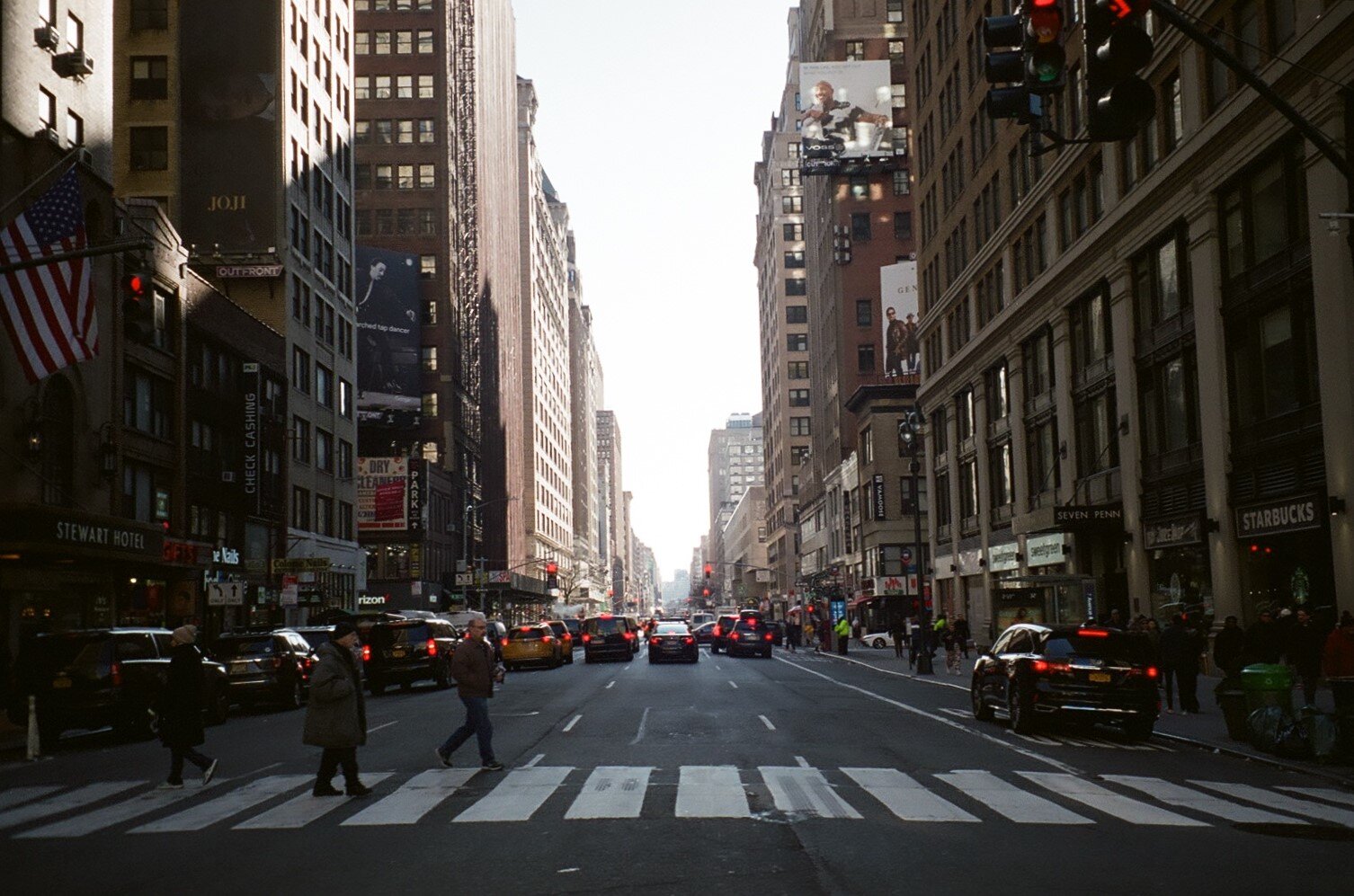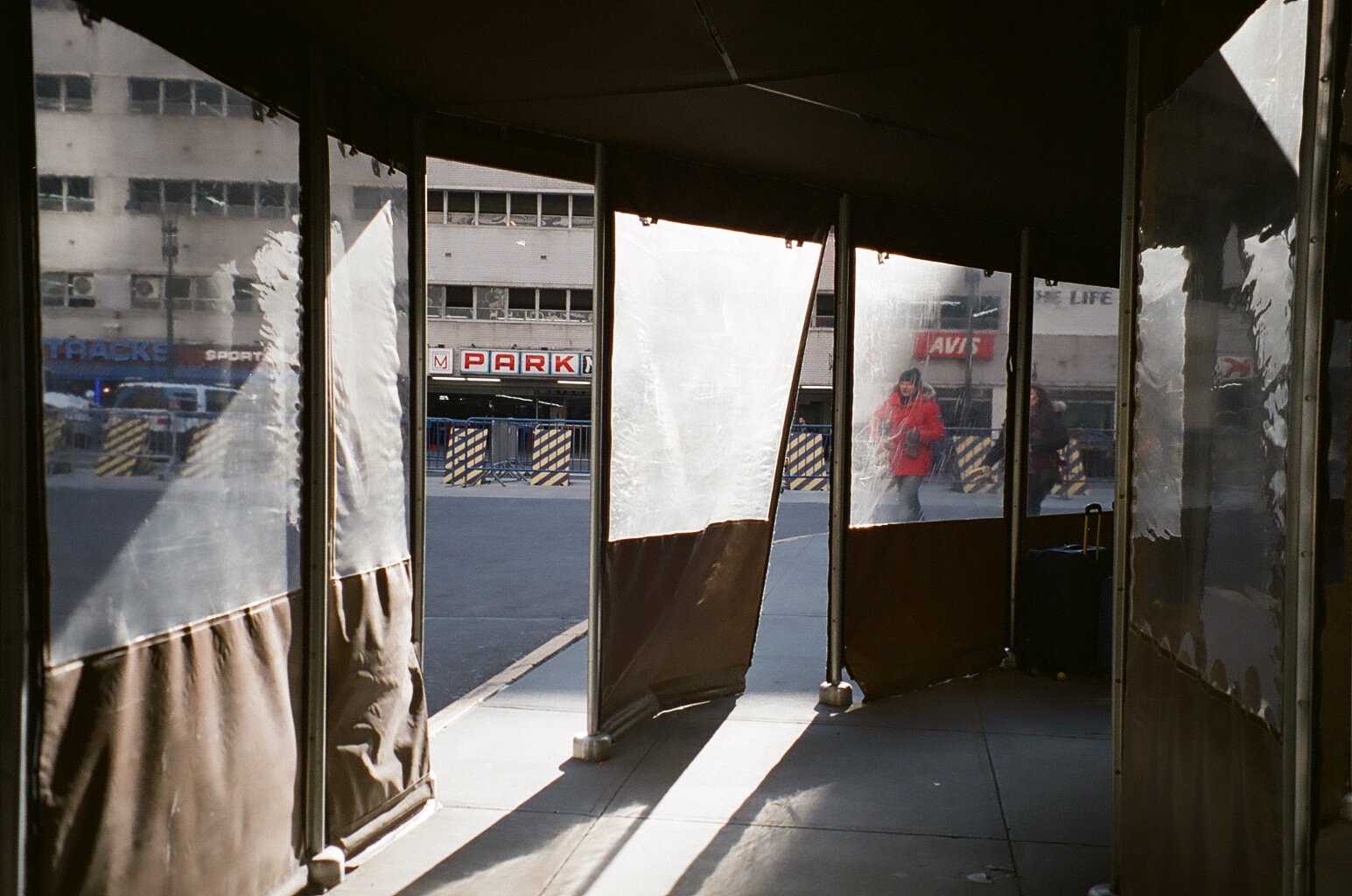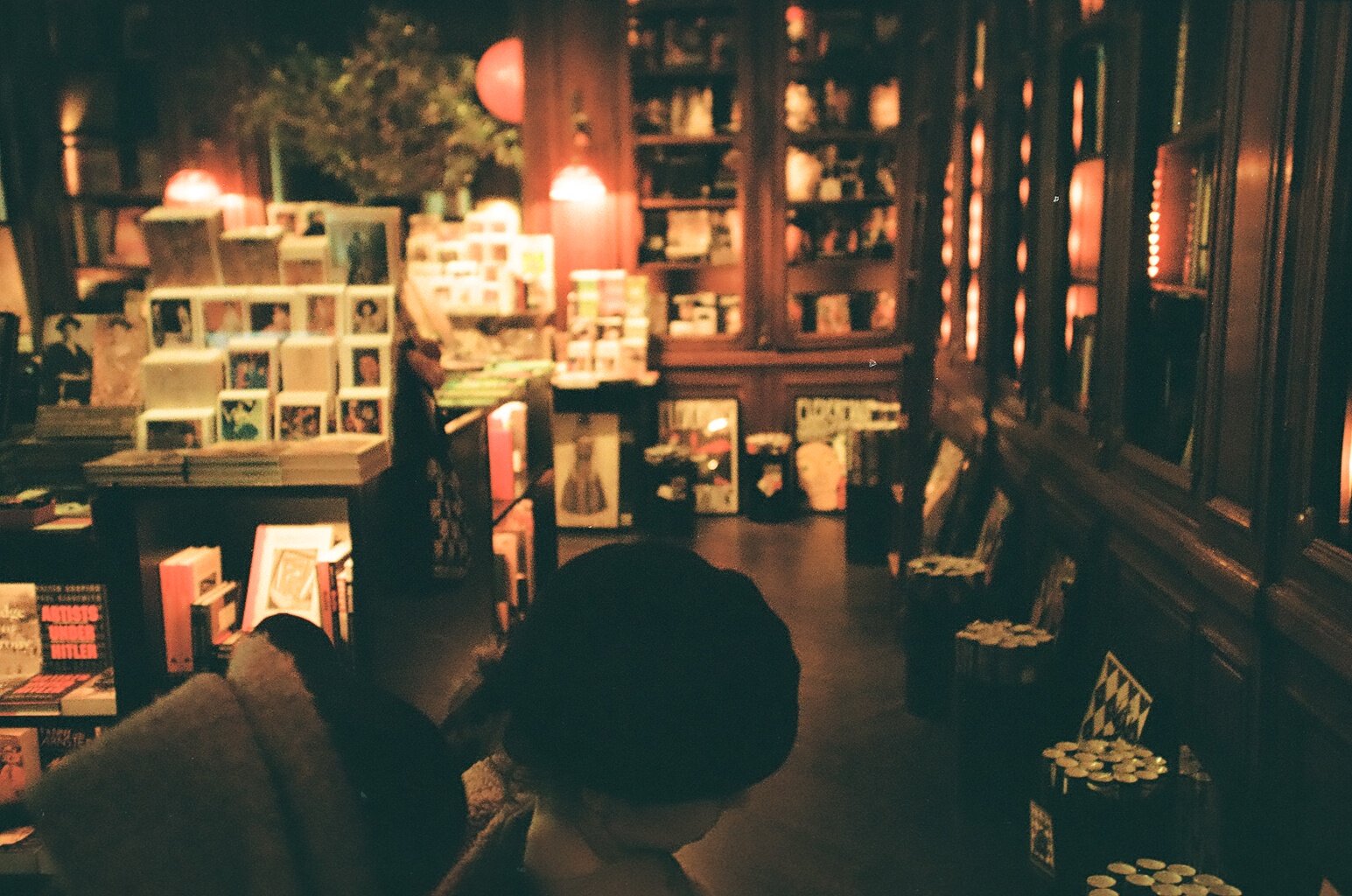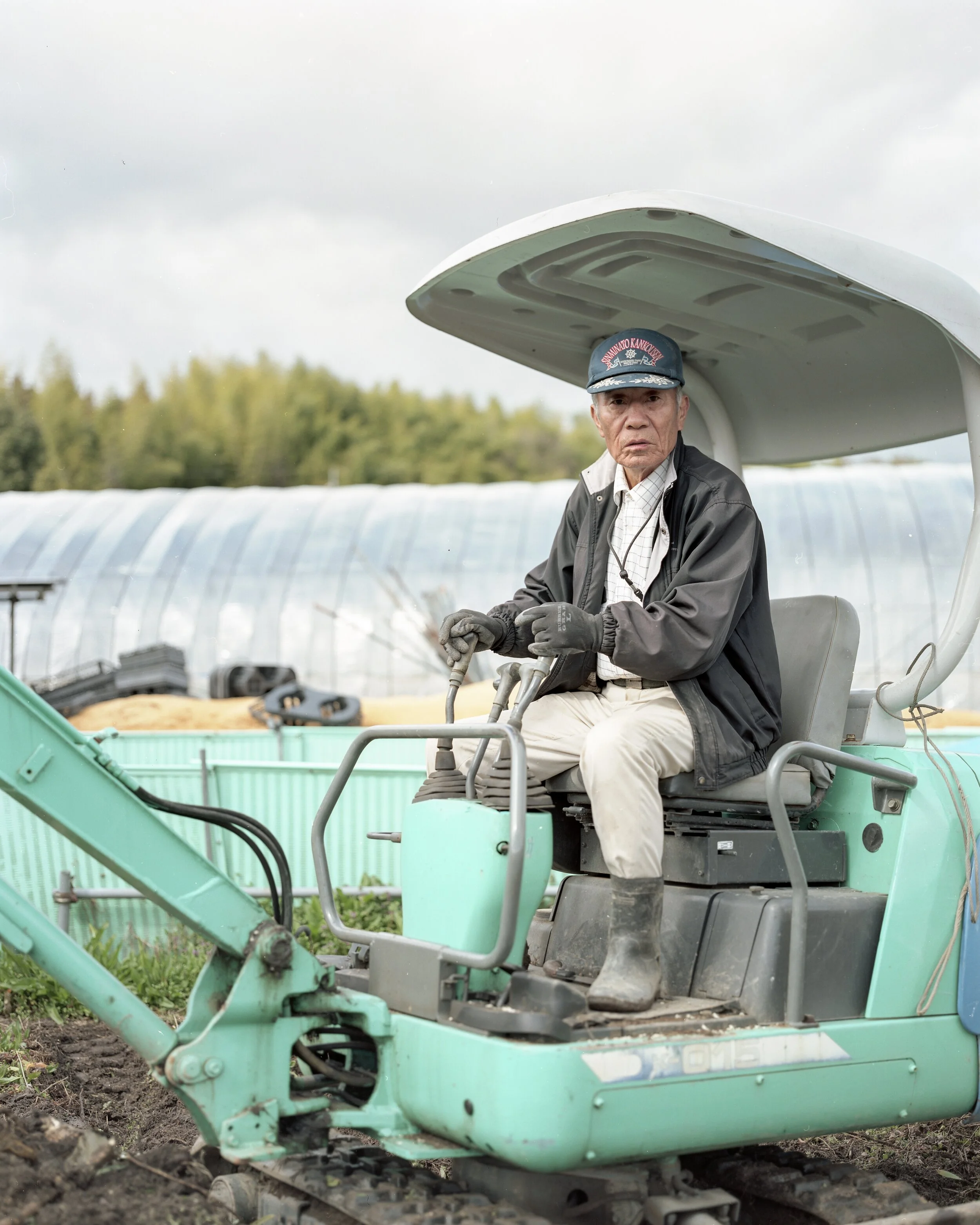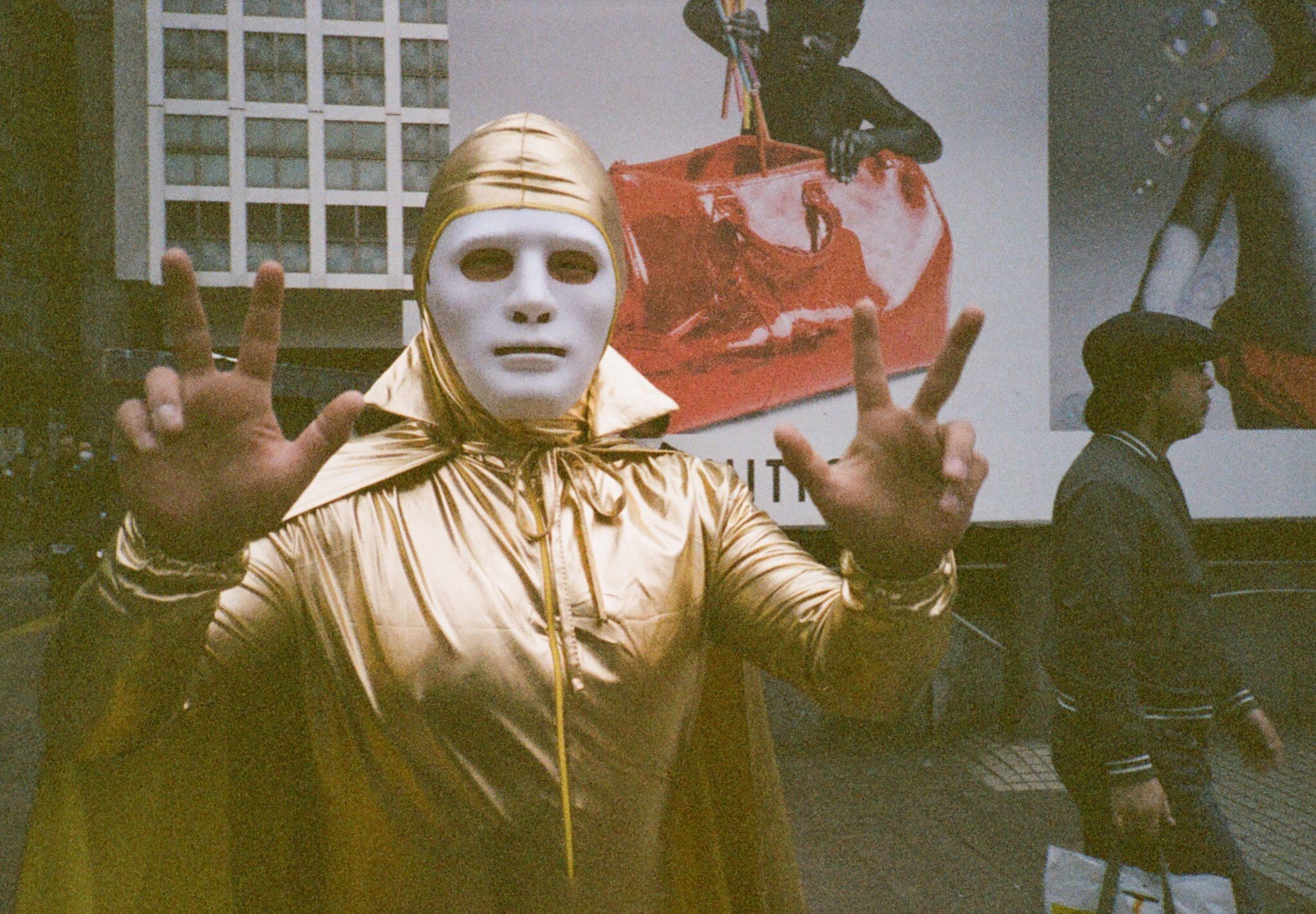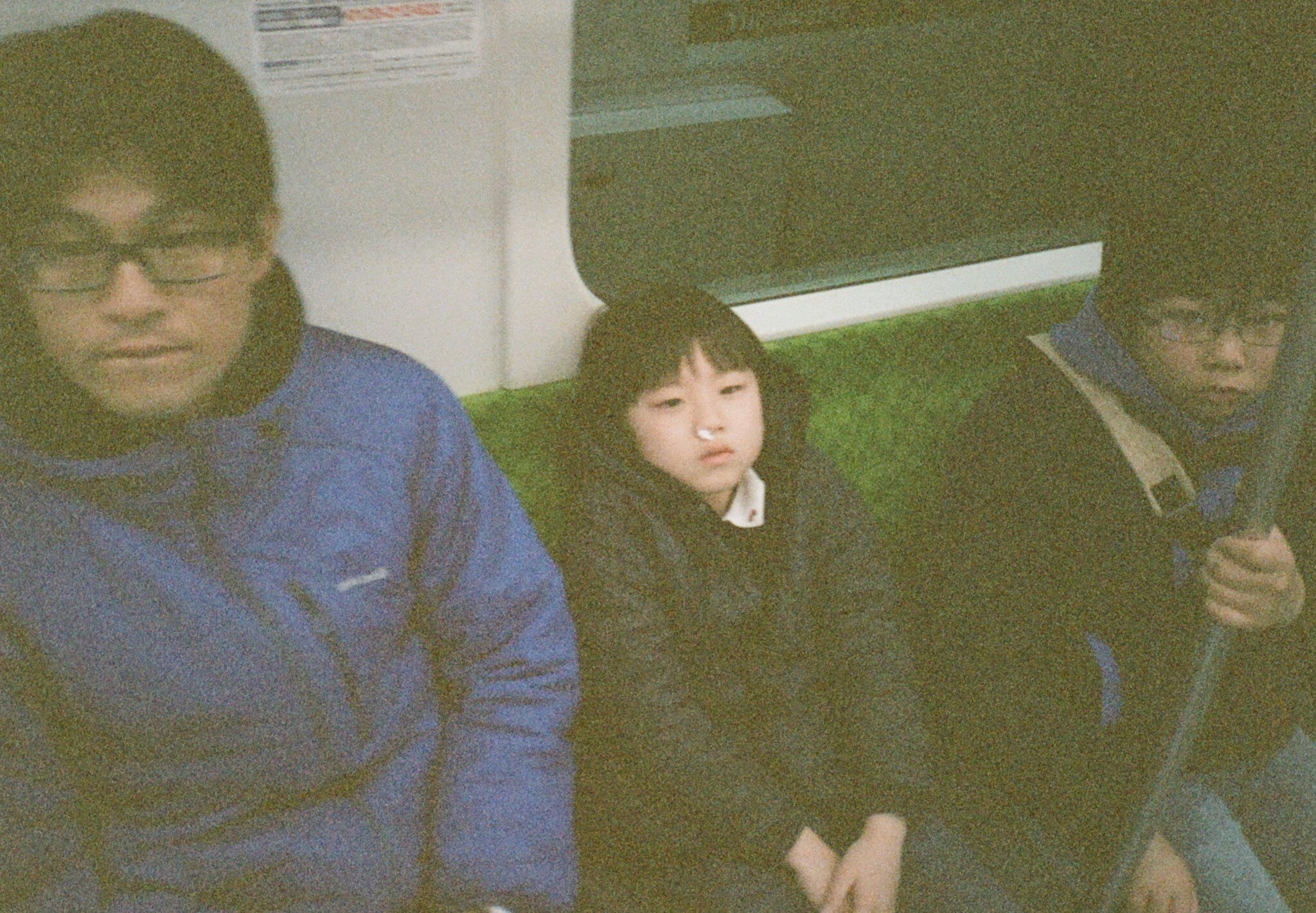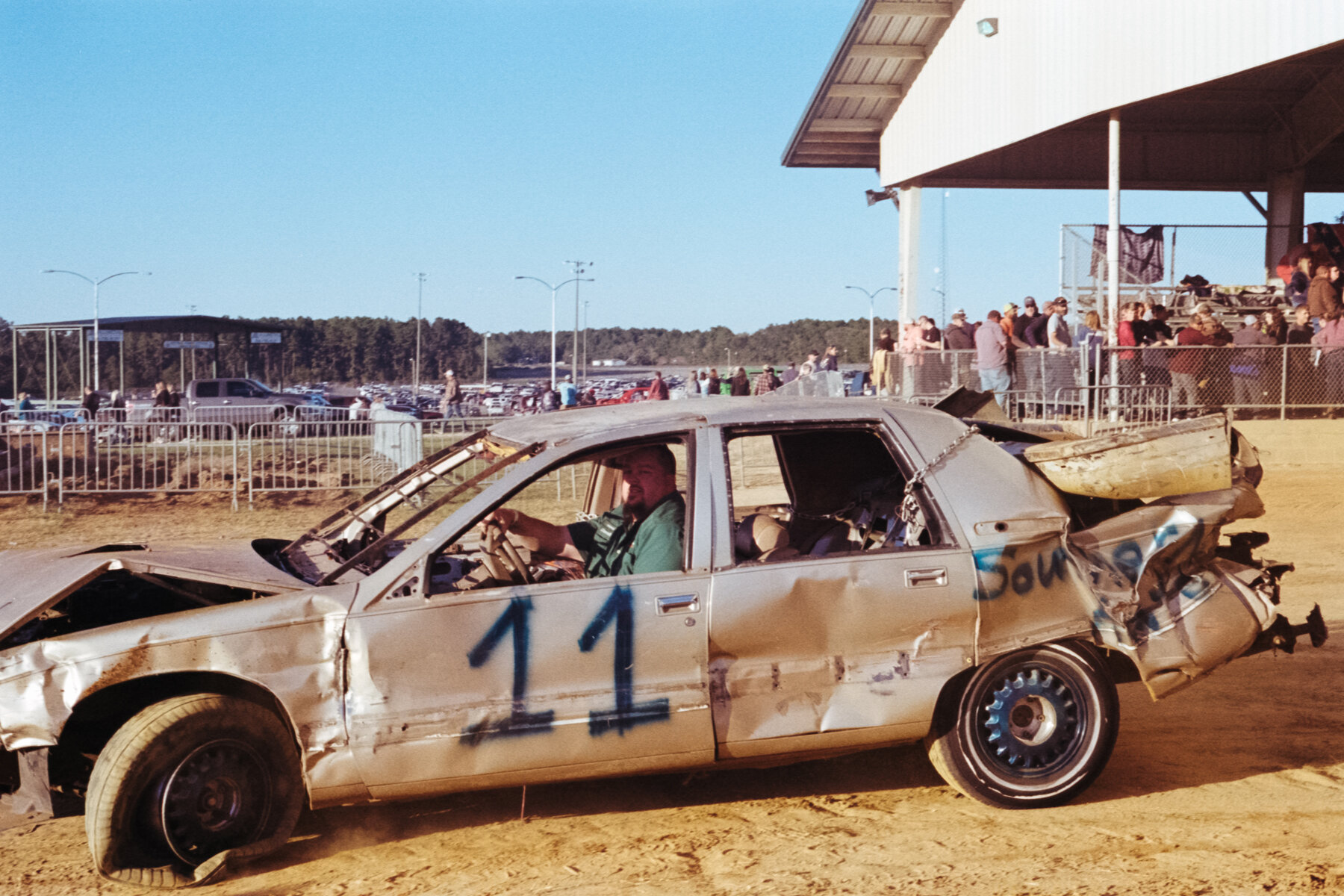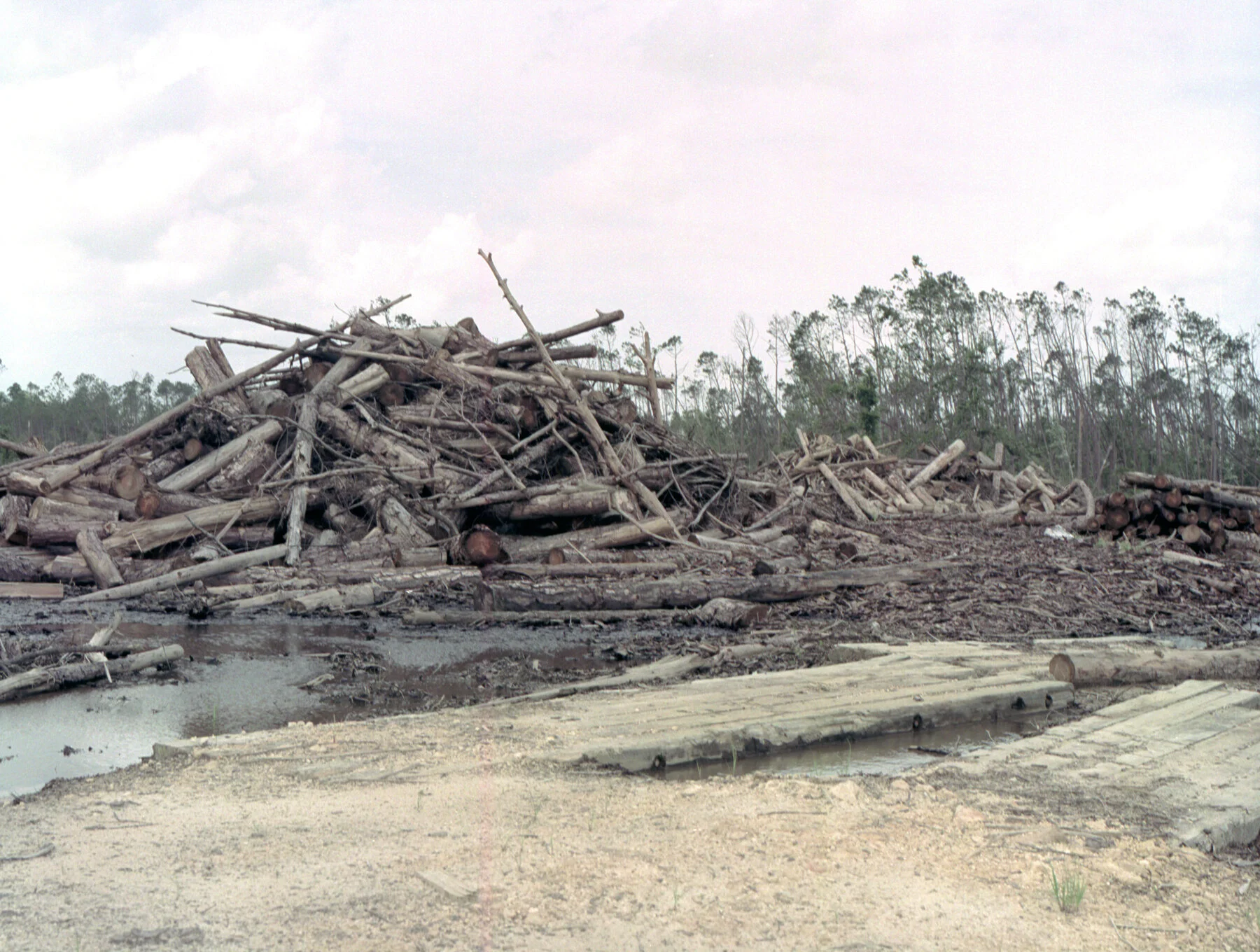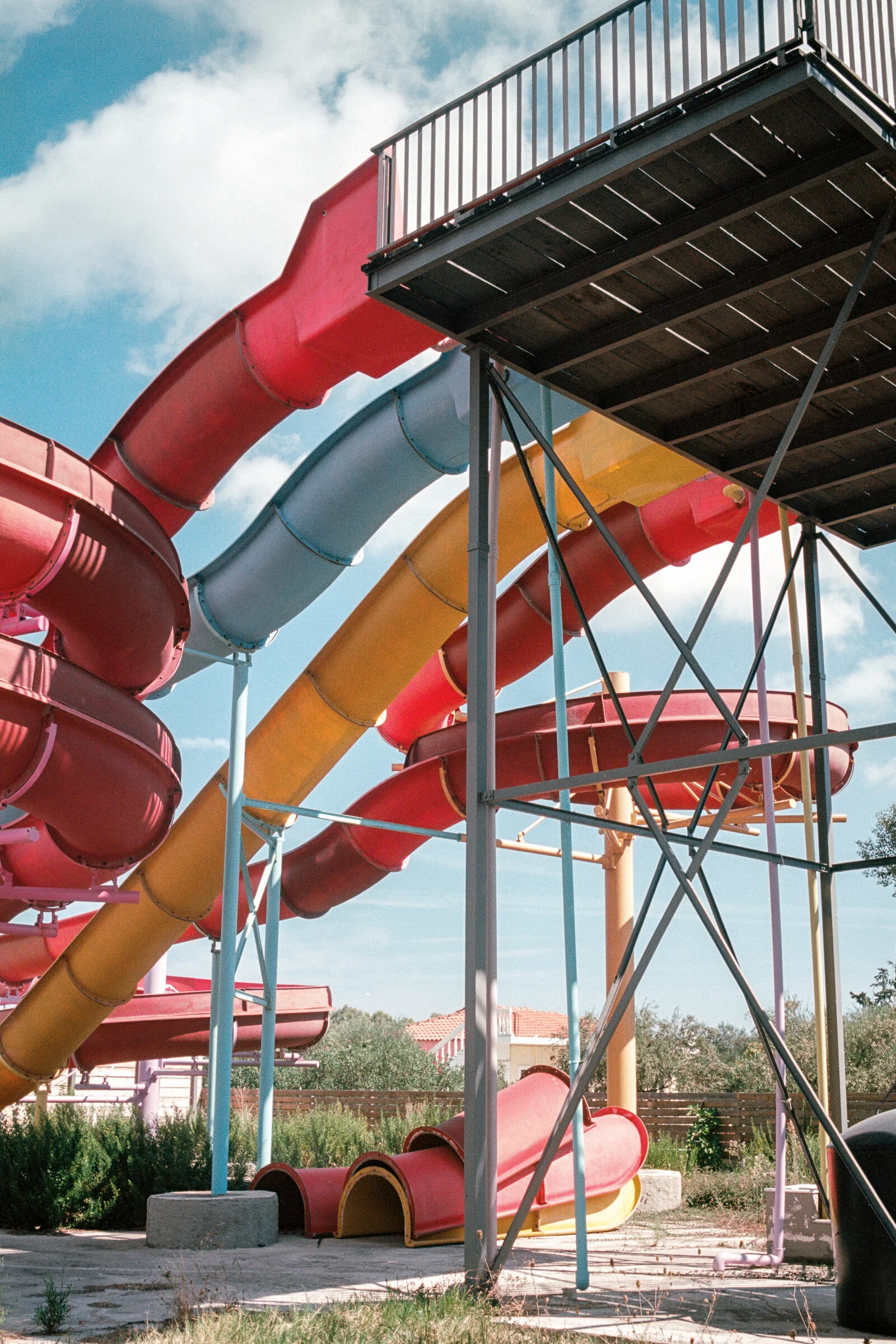SMALL ABYSS: Chris San Nicolas
PC: Chris San Nicolas
Andrew D. McClees (ADM): For those who aren't familiar with you or your work, can you introduce yourself and give an overview?
Chris San Nicolas (CSN): Hello, I'm Chris. I'm 26 years old, I live in Long Beach, CA, and I've been practicing photography for about 4 years. I started off bringing disposable cameras on trips and eventually grabbed my own 35mm camera, and it's been a steady and constant progression since then. I shoot a mix of street photography, landscape, and occasionally portraits. I don't shoot with an end goal or a specific photo in mind, I take photos as I go about living my life. I see all of the work as autobiographical in nature - with an overarching desire to represent life honestly, as I see it.
ADM: What was the impetus to put together and publish Small Abyss - also will it be a series - there is a "1" on the spine? A bit of an aside - I thought it was really cool how you used the frame marker 1 for that.
PC: Chris San Nicolas
CSN: I made a small zine a year into my start with photography and wanted to make another that was more representative of the work I've been making the past 3 years. Since it spanned a longer period of time and I wanted it to be more complex - physically and conceptually - I decided on a small book. In actuality I've been wanting to make a book for a long time, but around November of 2019 I finally thought up a concept that I believed served as an appropriate and interesting vehicle for this period of work.
I don't intend Small Abyss itself to be a series, but the next book/large zine project will have a frame marker for 2 on it - so more of a numbering system for main projects. Thanks, I'd be lying if I said that I didn't partially get the idea from the cover of that Forte Collab Zine you curated a while back.
ADM: I know that the project, while definitely focused, and the photos are well chosen for it - is compiled from photos taken over the last three years - what was the selection process like? Did you find yourself taking more from a specific time period, or end up using more recent photos over older ones?
PC: Chris San Nicolas
CSN: The project developed backwards in a way, with the title coming first and being the impetus for the whole project. I knew I wanted to make a large-ish cumulative project but a subject or theme didn't jump out at me just by looking through my photo archives, nor did a project based on one subject or type of photograph particularly interest me. When I was taking the first steps into the project (still unnamed) I was thinking a lot about how individuals perceive reality - how no one's personal experience can perfectly match up with another's, even if they experience the same events. That thought thread led to the title Small Abyss which (though it has many meanings) is a rebuttal to the line "No man is an island" from John Donne's Devotions Upon Emergent Occassions.
I let those competing ideas inform my selections as I looked through all the b&w work I've made since 2016. Since the theme was an exploration of an idea rather than a physical object or space or specific story, I was able to be creative in what photos I chose. I also wanted the interplay between the photos to be an integral part of the project, so I (painstakingly) cut a few of my favorite photographs I've made from the project because it didn't fit the theme or fit well with the photos in the project that did. I ended up choosing more recent photos than older but that's mostly because I took more pictures in 2019 than any other year. I printed ~200 photos in 4"x6" and taped them to my wall and let the layout create itself in a way. I knew I wanted the majority of the spreads to have one photo on the left and one on the right and function as pairs - one of the ways the photos interplay with each other. I also realized halfway through that I wanted there to be a progression that made sense with how the project exists as a book (which made me go back and change a lot of the pairings). I used this framework to guide the actual layout. It was a really iterative and organic process and though it was really fun, it was also frustrating and took a long time.
PC: Chris San Nicolas
ADM: In response to how you Assembled the zine: Did you hand print all the 4x6 prints? Also how did you come up with that process of putting the photos on the wall, and constructing your pairs from there - and how do you think that shaped your process rather than doing the process via sorting on a computer, or straight into a layout program?
CSN: No I used CVS for convenience and cost. I wasn't concerned with quality for these prints because they were more an intermediate form of the project. I've always been a fan of tactile processes, so I'm not sure that I can pinpoint a moment where I thought of using a wall. I think it's always made sense and been an aspiration for as long as I wanted to make a book of photographs. The final product was majorly influenced by this process. I had this birds-eye view of the whole project where every loose connection or interesting interplay would draw my eye like the movements of small critters in a large grassy field. When I saw these connections, I could immediately move the photos next to each other, replace one of them with another that works but in a different way, compare them to other pairings and so on with a speed and physicality that I don't know how to reproduce with a digital process. Screens are only so big and there's a trade-off between scope (how many elements you can see at at once) and detail (how clearly you can see each element) which are largely eliminated if you have a wall, prints, and mobility. Maybe I don't know how to use digital tools effectively enough, but I can never experiment as quickly on a computer with the mixing and matching described above and I had the added benefit of seeing the physicality of the photographs. With the goal being a book, this was invaluable. A lot of these frames I had only seen as scans on a screen and I was surprised by how many photographs that I had enjoyed initially, did not hold up when printed.
PC: Chris San Nicolas
ADM: The book contains a fairly intricate balance of landscapes (vernacular and traditional) with intimate portraits, and candid glimpses into other lives - how did you strike this balance this, and is there a particular significance to it?
CSN: As I mentioned before, an overarching goal for my photography is to represent life genuinely and I wanted this project to embody all the varied experiences in life. I used the balance of all of these kinds of photos as a way to do that. To reinforce this, I jumped around in scale a lot, for example going immediately from a close up of something tiny to a large sweeping landscape. And though the project doesn't stick to a single type of photo, there's a lot of repetition but also contrast in motifs throughout. A lot of the spreads present two similar things in different ways or two very different things in similar ways - like some kind of oxymoron. This ordered chaos is how I see life and I hope that feeling comes across.
PC: Chris San Nicolas
ADM: Was there a particular moment or photo, or even pair of photos - that the overall concept "clicked" into focus for you?
CSN: It wasn't with the photos that the concept clicked. There were two breakthrough points for me. The first was when I wrote the first draft of the poem (or 3 poems depending on how you look at it) in the beginning of the book. I had even used the phrase "No man is an island" in that first draft, which was taken out later.
The second breakthrough was when I was deciding on the overall structure of the book. Initially I wanted the book to be able to be read left to right (normally) as well as outside-in, where you'd start with the inside covers and turn a page on each side in until you reached the middle spread. The idea was for these outside-in "spreads" would work as mirrors or opposites of each other. The main gripe I had was that people don't read books like that and if I'm doing something that weird, it has to reinforce or add to the concept in a meaningful way. I scrapped the idea and played around with a few more related ideas until deciding on one. The final layout has a sense of progression that works with the experience of reading a book and how the photos are presented.
ADM: Going back to the zine being a focused anthology, what would you say your key influences were for it - photographic, or otherwise?
CSN: Presentation-wise, I took a lot of cues from Japanese photography from the 60's and 70's. A Hunter by Daido Moriyama and the Asahi Camera publications come to mind. Both often featured full bleeds on their two page spreads as well as their multi-photo spreads. Another influence was Rap/Hip-Hop which I have only recently started exploring. I've always enjoyed wordplay and turns of phrase. I especially like when someone pivots, talking about a whole new topic based on a double meaning of a single word from the previous line. I wanted the progression of photographs in the book to feel like a series of pivots or turns in phrase maybe even audio samples taken from diverse sources but meshed into the narrative I was trying to create.
PC: Chris San Nicolas
ADM: In terms of takeaway, what did you notice about your work, and by extension, about how you and your vision changed over the three year period?
CSN: The biggest takeaway I had was realizing how much of my work had been guided by my subconscious, the same subconscious that attached to the concept of Small Abyss Vs No Man Is An Island. I feel like this idea has always been in the back of my head and after these 3ish years of it quietly guiding my intuition as I made photographs, it finally bubbled to the surface and I had enough work to express it in a satisfactory way. But now that the cat's out of the bag, it's something I feel like I'll always be conscious of and because of that I'm not sure if I'll keep making work like this going forward. This project feels like a bookend, at least for the last few months it has. I haven't been shooting nearly as much once I started making the book and I think it's because I want to tackle a different problem with a different artistic language or medium. I'd say the biggest realization is that I was always working towards something like this and now, at least until I'm no longer burned out on this work, it's time for something new.
ADM: Now that you've wrapped up Small Abyss, what can we look forward to in the future?
CSN: I honestly couldn't say. I'm still taking pictures, just not as frenzied as before. Definitely more photography, probably less exclusive b&w 35mm film work. The project has definitely made me want to do more physical projects. Now that I have the large overarching project done, I've given myself permission, I guess, to do smaller, more niche projects possibly with a more mixed media approach.
ADM: Would you say after this project your working process has changed? if so how, if not why not?
CSN: I'd say it has definitely slowed down. I've been putting a lot of energy into finishing the book and have been shooting less. I hope I'll eventually get back into a groove where I'm shooting at least a roll a week. I think I'll have to start making smaller projects with goals in mind or define more explicit long term projects instead of idly shooting.
ADM: What advice would you give for someone looking to put together a retrospective of their work, especially one covering as much material as yours does?
CSN: Have a concept or theme that you can dig into and also have enough work to fulfill it. Make sure to overview all your work, there might be stuff you forgot about that will work really well. Keep asking yourself questions and don't get married to any one idea.
ADM: Do you have any parting words? Also where can we pick up copies of Small Abyss and see more of your work - I know you do print on demand - both darkroom and inkjet.
CSN: Just stay safe and sane and healthy. Small Abyss will be available on my website www.chrisnicpics.com or through DM via ig at @chrisnicpics. You can also see my work on my website and ig. I do, I'm still figuring it out more consistent print sales but if you follow me on either platform, I'll let you all know on there. Thanks again for doing this interview with me and promoting the project, Andrew. Really appreciate all the stuff you do for the community!
Hi! If you’ve read this far: Thank you! We hope you’ve enjoyed this interview! if you enjoy content like this, please consider subscribing to our Patreon!







